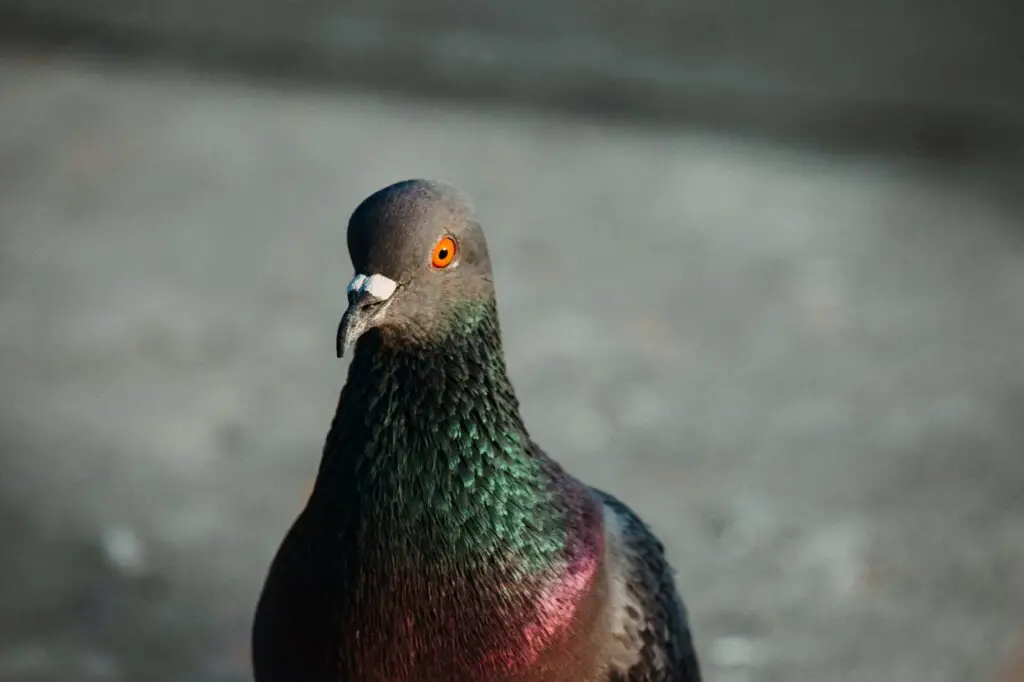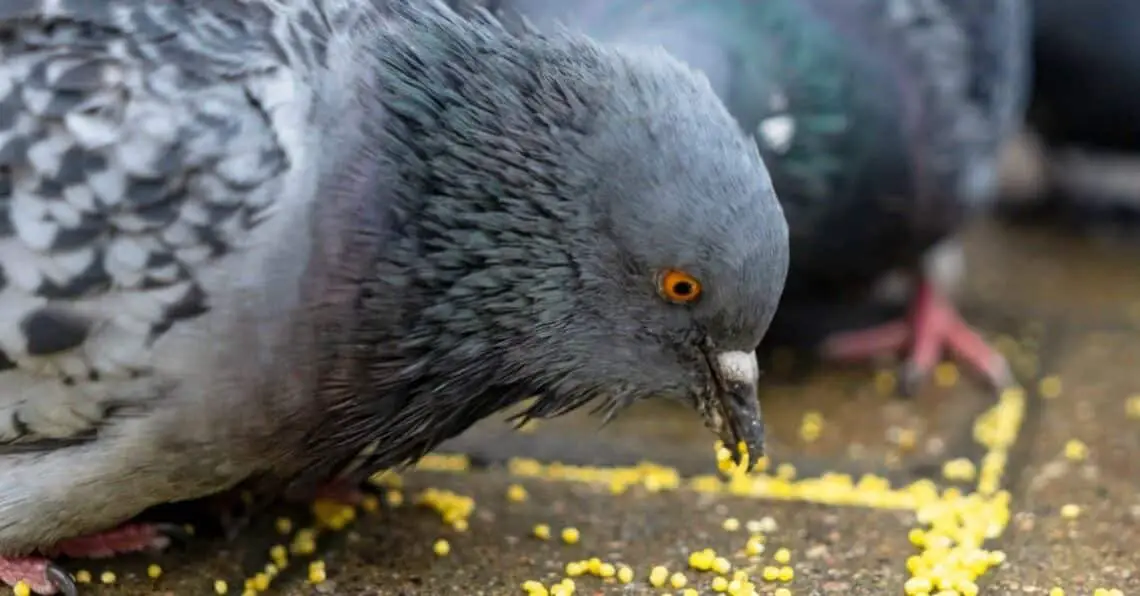Introduction
Do Pigeons Have Ears: Pigeons, those ubiquitous urban dwellers, often inspire curiosity with their unique behaviors and adaptations. While their cooing calls and distinctive waddling gait are familiar to many, questions about the intricacies of pigeon biology abound. One such question that piques the interest of bird enthusiasts and casual observers alike is whether pigeons have ears. In the avian world, where adaptations can vary significantly from species to species, the presence and form of ears in pigeons unveil a fascinating aspect of their anatomy.
In this exploration of pigeon physiology, we embark on a journey to unravel the mystery of pigeon ears. Do these birds possess the ability to hear, and if so, how do their auditory systems function? Delving into the world of avian hearing, we unveil the adaptations that allow pigeons to navigate their surroundings and communicate with one another. From ear-like structures to the remarkable ways they perceive sound, the story of pigeon ears offers insights into the sensory world of these resilient and adaptable birds.
So, join us as we venture into the realm of pigeon eat biology, where seemingly simple questions lead to remarkable discoveries about the intricate adaptations that enable pigeons to thrive in diverse environments and coexist with humans in bustling cities around the world.

Do pigeons can hear?
Pigeons are able to hear certain frequencies that humans cannot. This allows them to sense things like volcano eruptions and incoming storms that meteorologists haven’t even discovered yet.
Yes, pigeons can hear. While pigeons do not have external ears like mammals, they possess internal ears that are well-developed and adapted for hearing. Their auditory system allows them to perceive and process sounds in their environment.
Pigeons rely on their hearing for various purposes, including:
Communication: Pigeons use vocalizations, such as cooing calls, to communicate with one another. Their ability to hear these calls is essential for social interactions and mate attraction.
Predator Detection: Pigeons use their acute hearing to detect approaching predators, such as birds of prey or other potential threats. The ability to hear the sounds of danger helps them stay alert and respond quickly to threats.
Orientation and Navigation: Pigeons are known for their remarkable homing abilities. Part of their navigation relies on their ability to detect low-frequency sounds, including infrasound, which helps them orient themselves and find their way home over long distances.
While pigeons’ hearing capabilities are different from those of mammals, their internal ears allow them to perceive a wide range of sounds in their environment. This auditory sense is vital for their survival and success in diverse habitats, including urban environments where they coexist with human-made noises and challenges.
Where are the ears on a pigeon?
But no ears. Because unlike mammals, birds have no external ear structures. Their ear openings are hidden beneath feathers on the side of the head, just behind and slightly below the eyes.
Pigeons, like most birds, do not have external ears that are visible on the sides of their heads like mammals do. Instead, their ears are located on the sides of their heads, just behind and slightly below their eyes. Pigeon ears are covered by feathers and are not externally prominent, making them difficult to see.
The external ear opening, known as the ear canal, leads to the middle ear, where sound is transmitted to the inner ear for processing. Pigeons have well-developed internal ears that are adapted for hearing a wide range of sounds, including vocalizations, environmental sounds, and infrasound, which is below the range of human hearing.
While pigeon ears are not visible, their auditory system is highly functional and plays a crucial role in their communication, predator detection, and navigation.
Do doves have ears?
However, birds differ from humans in that they lack an external ear structure. Where humans have an outer ear organ, birds have a funnel-shaped opening that functions as their outer ear, located on each side of their head. These openings are usually positioned behind and slightly below a bird’s eyes.
Doves, like pigeons, have ears, but they do not have external ear structures that are visible like mammalian ears. Instead, their ears are located internally, on the sides of their heads, just behind and slightly below their eyes. These internal ears are well-developed and adapted for hearing, allowing doves to perceive sounds in their environment.
The auditory system of doves, including their external ear canal, middle ear with ossicles, and inner ear with sensory hair cells, enables them to detect and process a wide range of sounds. This auditory sense is essential for their survival, communication, and navigation in their surroundings, and it plays a crucial role in their daily activities, such as foraging, detecting predators, and communicating with other doves through cooing calls.
How do pigeons listen?
A new study has suggested that birds use their heads to listen to the sounds coming from different angles as they do not have external ears. Unlike mammals, birds have no external ears and their head does the work of external ears.
Pigeons, like many birds, have a well-developed auditory system that allows them to listen and perceive sounds in their environment. While they do not have external ears like mammals, their internal ears are adapted for hearing a wide range of sounds. Here’s how pigeons listen:
External Ear Canal: Pigeons have a small external ear opening, or ear canal, on each side of their head. This opening leads to the middle ear.
Middle Ear: The middle ear contains three small bones known as the ossicles (the stapes, incus, and malleus). When sound waves enter the ear canal, they cause vibrations in the eardrum (tympanic membrane). These vibrations are then transmitted through the ossicles to the inner ear.
Inner Ear: The inner ear contains the cochlea, a spiral-shaped structure filled with fluid and sensory hair cells. When vibrations from sound reach the inner ear, they stimulate these hair cells. The hair cells convert the mechanical vibrations into electrical signals, which are then transmitted to the brain via the auditory nerve.
Auditory Processing: The auditory signals received by the brain are processed in the avian auditory centers, allowing pigeons to perceive and interpret various sounds in their environment. Pigeons can distinguish between different frequencies, intensities, and types of sounds, including vocalizations from other pigeons and environmental noises.
Are pigeons deaf?
Pigeons have excellent hearing abilities. They can detect sounds at far lower frequencies than humans are able to, and can thus hear distant storms and volcanoes.
Pigeons are not deaf; they can hear. While pigeons do not have external ears like mammals, they possess well-developed internal ears that are adapted for hearing a wide range of sounds. These internal auditory structures allow pigeons to perceive and process sounds in their environment.
Pigeons rely on their sense of hearing for various purposes, including communication with other pigeons through cooing calls, detecting the sounds of approaching predators, and navigating their surroundings. Their auditory system is essential for their survival and success in diverse habitats.
Pigeons are not deaf; they have a functional sense of hearing, although their auditory anatomy and mechanisms differ from those of mammals.
Are pigeons silent?
Doves and pigeons make excellent pets for a variety of reasons: They are attractive. They are quiet and unobtrusive, with a calming, gentle voice.
Pigeons are not silent birds. They are known for their cooing calls, which are a common and distinctive sound associated with pigeons. The cooing calls are used by pigeons for various purposes, including communication between mates, signaling territorial boundaries, and attracting potential partners during the breeding season.
While cooing calls are the most well-known vocalization of pigeons, they can also produce other sounds, such as wing claps and flapping noises when flying. Additionally, pigeons may make soft, murmuring sounds during interactions with other pigeons or in response to various environmental stimuli.
So, while pigeons are not noisy birds like some songbirds, they are not entirely silent either. Their cooking calls are a recognizable and characteristic feature of their communication and behavior.
Can pigeons hear human voices?
However, at the extreme ends of this spectrum, the sounds must be rather loud to be audible. (For example, the fundamental pitches from a piano range from about 28 Hz to 4186 Hz.) But what about pigeons’ hearing? Earlier tests had shown that pigeons were about as sensitive as humans between 200 Hz and 10,000 Hz.
Yes, pigeons can hear human voices. Pigeons have a well-developed auditory system that allows them to perceive a wide range of sounds, including human voices. They are sensitive to various frequencies and intensities of sound, making them capable of detecting and distinguishing between different sounds in their environment.
Pigeons often encounter human voices in urban and suburban settings where they coexist with humans. They may respond to human voices by becoming alert or adjusting their behavior, especially if the voices are loud or unusual.
While pigeons may not understand human language as humans do, they can hear and react to the tones, volumes, and rhythms of human speech. This sensitivity to auditory stimuli is part of their adaptation to living in environments shaped by human activities.
Do pigeons feel pain?
From transduction to transmission, modulation, projection, and perception, birds possess the neurologic components necessary to respond to painful stimuli and they likely perceive pain in a manner similar to mammals.
Pigeons, like other animals, are capable of experiencing pain. They have a nervous system and sensory receptors that allow them to perceive and respond to noxious or harmful stimuli. When pigeons encounter something that causes them physical harm or discomfort, they can exhibit behaviors indicative of pain, such as vocalizations, avoidance, protective reactions, or attempts to escape from the source of pain.
Well-being and humane treatment of pigeons and all animals. Causing unnecessary harm or distress to pigeons or any other living beings is generally discouraged, and ethical guidelines and laws are in place in many regions to protect animals from unnecessary suffering. These guidelines may pertain to activities such as scientific research, animal husbandry, and wildlife management.
Pigeons, like all vertebrates, have the capacity to feel pain and distress. Responsible and compassionate treatment of animals is essential to their welfare and is encouraged in ethical and legal contexts.

Conclusion
The exploration of whether pigeons have ears reveals a captivating facet of their avian biology. While pigeons do not possess external ear structures like mammals, they do indeed have ears, albeit in a different form. These avian ears, tucked away beneath their feathers, are essential for their survival and navigation in the world.
The auditory adaptations of pigeons underscore the remarkable ways in which different species have evolved to perceive sound. Pigeons rely on their acute hearing to detect approaching predators, communicate with one another through cooing calls, and navigate complex urban environments. The study of pigeon ears sheds light on the diversity of sensory systems across the avian world, highlighting the adaptability and resourcefulness of these birds.
As we unravel the mysteries of pigeon biology, we gain a deeper appreciation for the resilience and adaptability of these urban inhabitants. Pigeons ear may go unnoticed in the bustling cities they call home, but their unique adaptations, including their concealed yet highly functional ears, remind us of the fascinating world of wildlife that thrives alongside us in our urban landscapes.





No Comments